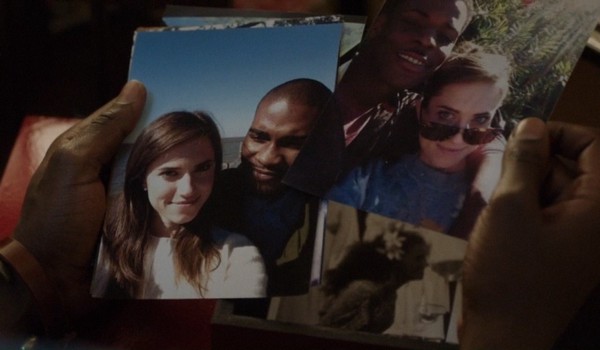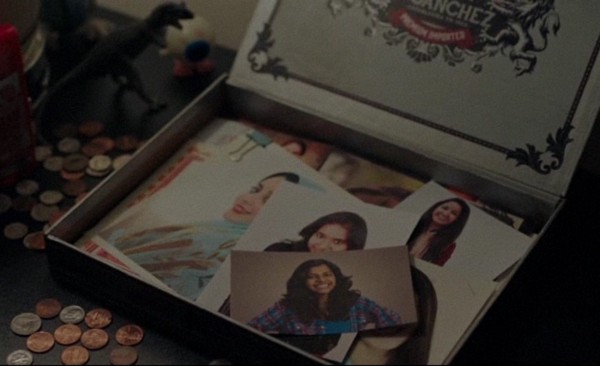Awards season is nearly upon us, and the first minor controversy is out: how can Get Out be considered a comedy in competition for a Golden Globe with a movie like The Big Sick? But pitting these two movies against each other is perfectly appropriate, because they both explore the intricacies of interracial relationships with white women, and they’re both horrifying. The only difference is that Get Out was intended to be horror, whereas The Big Sick was just a horrifying display of internalized racism.
The central conceit of both movies is that a dark-skinned American man has to meet and spend considerable amounts of time with the parents of their white girlfriend. But the two films could not be more different in their approach to the story. Get Out examines the motives of interracial pairings, and the paradoxical encouragement of these pairings by a white society that had once made them illegal. The Big Sick questions nothing at all, and is little more than a manufactured feeling of lost innocence sold to a white audience that has far too much anti-Muslim guilt on their hands to ever again feel the real thing.
Just how horrifying is The Big Sick? Kumail Nanjiani’s main character (himself) closes out the movie’s culminating scene by offering Emily — the white girl embodiment of his white aspirations — a jar of ashes of “all those Pakistani women” that his evil brown mother tried to force upon him. Emily rejects it, not because it’s a supremely creepy gesture, but because it’s simply not enough to make up for the fact that he ever considered getting with one of those Talibanettes. Never mind that he literally saved her life and cured her parents of fake movie racism in the process. He sulks away with his tail between his legs, accepting that he’ll never achieve his dream of becoming a white comedian.
Kumail is a character who considers his Pakistani heritage a deep embarrassment. His identity is deeply implicated in this heritage just as a fellow comedian’s identity is deeply implicated in her obesity. It’s something that they use public performance to come to terms with, so that they may find the acceptance that will allow them to escape their unfortunate condition. The Big Sick is just as apt a reference to Kumail’s ethnicity, as it is for his girlfriend’s coma.
He performs a (knowingly) horrendous one-man show, set in his childhood bedroom, as he recounts laughably esoteric facts about his home country such as Partition, arranged marriage, and the unavailability of Knight Rider. To Kumail, these are all flattened out into bullet point examples of how Pakistaniness holds him back from a fulfilling American existence. That is, a white American existence.
Regarding arranged marriage, he describes it in voice-over as a way to strip individual choice and impose tribal will. But compare that to what his mother actually does: she subtly brings witty and beautiful Pakistani girls over to the house so they can do their best to charm Kumail, just so he can reject and humiliate them by not even showing up to say hello. And compare that to what his mother actually says:
Kumail there is not going to just be a magic spark, okay? You have to work at it, you have to stay open.
Oh the horror. The film is basically one long indictment of his hopelessly backwards parents, who expect him to buy into shameful Pakistani traditions like praying occasionally and taking the LSAT. But what of the other side of this interracial love story? What about Emily’s white parents? There is a modest attempt to show her father’s anti-Muslim bias when he says to Kumail:
So uh, 9/11. No I mean… I’ve always wanted to have a conversation with… about it… with… people. What’s your stance on it?
And that’s it, that’s every bit of racism that Emily’s white southern parents are allowed to express in the entire film. This is the depth of The Big Sick’s exploration of the white side of a white/brown pairing. It’s about two minutes later that the father is besties with Kumail. And mind you, the father is not exactly your typical white daughter-guarding intimidator. He’s played by of all people Ray Romano, a guy who got famous from a show called Everybody Loves Raymond.
The most galling example of this asymmetry between Nanjiani’s interrogation of whiteness versus Pakistaniness comes in the scene where Kumail is performing his droll bit of comedy at a club with Emily’s parents in the audience. A very poorly written white heckler tells Kumail to “go back to ISIS,” which Kumail meekly downplays. It’s all just a setup for Emily’s white mom to demonstrate white woman empowerment and righteousness, as she takes the insult so personally she viciously attacks the heckler. She even has to be restrained and booted from the premises, her righteousness runs just that deep. She’s Kumail’s white savior, and it even helps to spice up her passionless marriage. This scene alone should make it crystal clear who this movie is pandering to (hint: it’s white people).
As for Kumail’s mother, she holds fast to her rejection of his white aspirations, and refuses to even see him off in person while he packs off to leave his hometown against her wishes. She’s absent, remaining inside the distant car out of protest. Yet she is present in spirit through a tupperware of Kumail’s favorite home cooked dish she prepared for his journey. That’s as far as she’s allowed to go as a character: a loving mother who cannot see past her own Pakistaniness, and therefore must grudgingly surrender her youngest son as the price for such barbarism.
There’s a remarkable parallel in The Big Sick and Get Out. In both movies, a box of pictures is discovered by one of the interracial lovebirds. In Get Out, Chris discovers Rose’s trove of pictures of black men, which contradicts her earlier statement that Chris was her first black boyfriend. In The Big Sick, Emily discovers Kumail’s trove of headshots of Pakistani women her mother introduced him to.


Chris is disturbed that his white girlfriend ‘specializes’ in interracial relationships with black men, particularly athletic looking guys. In a later scene she goes onto a basketball recruiting site, not unlike say a white guy with an Asian fetish might go onto an Asian-themed porn site. It’s racial fetish at its worst, where the fetishizer diminishes an entire race into a set of physical attributes to be prized and taken for gratification.
Emily is similarly disturbed, but by Kumail’s apparent interest in woman of the same race as himself. The fallout is just as real, and in fact both scenes are the narrative turning point of each movie, in which the uncomfortable racial dynamics of the love story is finally confronted. But in The Big Sick, it is considered a racial fetish for a brown man to be interested in brown women. Nothing is said, ever, about the potential for fetishization of white femininity; it is brown femininity which is by definition transgressive and fetishistic. It’s so transgressive that the only answer to this problem of self-fetishism is for Kumail to burn these Pakistani women into ash, seal it in a bottle, and offer it as a sacrifice to the white woman of Kumail’s dreams.
Somehow, I gather that wasn’t the interpretation Nanjiani was going for. But how can an Asian audience see this any other way? We’ve seen it far too often going the other way, for example the total and complete humiliation of Chinese men at the hands of Chinese women in the recent BBC show Chinese Burn. In the pilot episode, a Chinese main character says she ‘doesn’t do Chinese’ and that the sight of a Chinese man turns her vagina into the ‘drylands.’ There’s not even a need to watch the full episode to know where that is going to head (hint: it’s Chinese dick jokes).
This kind of self-destructive narrative is what the Asian diaspora is still serving up as “fighting our stereotypes.” In this regard, relative to where black consciousness is at on these matters, we Asians truly are novices at this sort of thing.
The Big Sick is part of a rather disturbing trend by many of our more famous brown Asian brothers to ground their work around their relationship with white femininity. Aziz Ansari has based both seasons of Master of None around his failed attempts to get a white girl. Hasan Minahj’s Netflix special Homecoming King deals entirely with his decades-long angst over loving and losing a white girl he barely knew in high school. And Ravi Patel’s documentary Meet the Patels centers around him finally surrendering his quest for white love, and his reluctant concession to settle for the brown version (the happy ending is that he pulls out the win in the end and gets the white girl after all).
These are all actually pretty good works, and at some surface level I enjoyed The Big Sick as well. But the common frame of reference that defines all of these works — and which operates most oppressively in Nanjiani’s film — is the base assumption that brown culture, be it Indian or Pakistani, is a pre-modern, obsolete, and sick culture which can only be cured through the ascendance into, and acceptance by, whiteness, as embodied by white women. Minahj and Patel go the furthest in displaying some level of awareness of this framework of self-loathing. Nanjiani and Ansari, however, display almost none of this awareness, and perhaps it is then no accident that their works are by far the more celebrated (and funded… and marketed… and distributed).
Unlike Master of None, however, Nanjiani’s film seeks to deal directly with the question of whiteness and the brown man’s place in it. Ansari sets out merely to portray a life within these constraints, while completely mischaracterizing the severity of those constraints (Oxford Kondō wrote about that here). Nanjiani takes a direct swing at the issue, but strikes out so hard that all the awards season celebration of The Big Sick must mean I’m cheering for the opposite side. That is, the side of Asian people who don’t hate on themselves in public like this.
It must be noted here that being a light-skinned Asian has not at all been the same as being a brown-skinned one, especially since 9/11. East and Southeast Asians have, for the most part, benefited from the fact that American xenophobia is so directly aimed at the brown-skinned among us, and we’ve done precious little to correct that. So Kumail’s passivity may be something a bit more than a minstrel show, just as the minstrel-like appearance of Desi Arnaz singing Babalu for a white dinner theater audience has to be adjusted for racism inflation since the 1950’s. But this tendency exists among light-skinned Asians too, and it’s certainly not confined to Asians at all. We’ve seen it in the form of Sydney Poitier in Guess Who’s Coming to Dinner.
It is the belief of ethnicity as a condition, an illness, something that only purity of soul and faith in love can help its victim overcome. It is ethnicity as our collective Big Sick. Here is to Jordan Peele taking the Golden Globe home over Kumail, for diagnosing the right disease.

Comments powered by Talkyard.